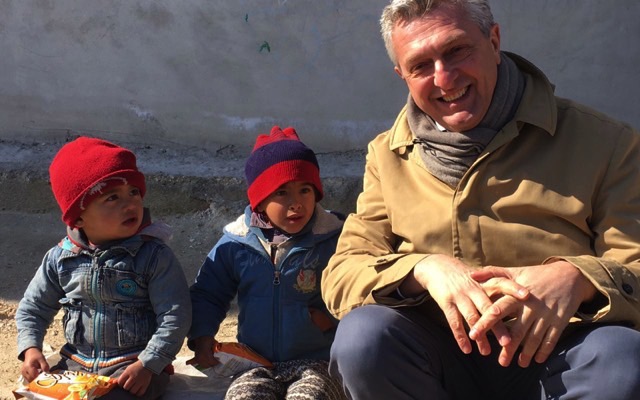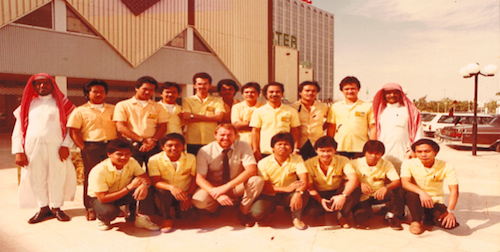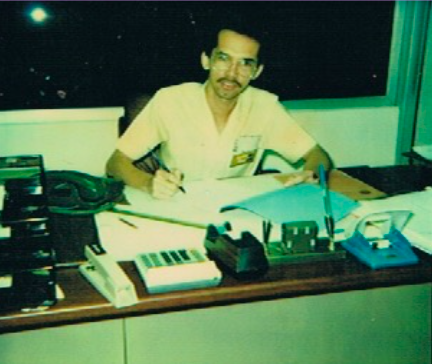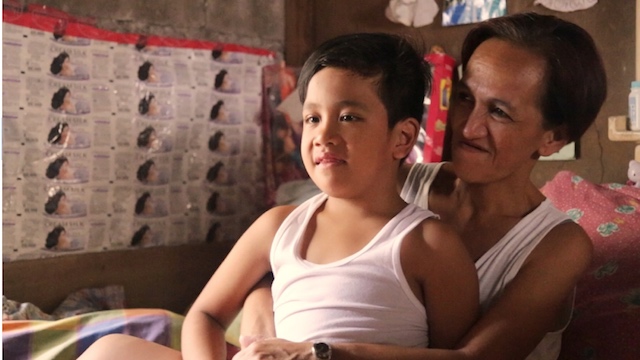
ILOILO, Philippines – Upon landing at the Iloilo International Airport from a seminar-workshop in Manila, urban poor and labor leader Mario Andon heard the flight attendant announce that Iloilo is a no-smoking zone.
The flight attendant cited Iloilo Resolution 2015-321, which declares that Iloilo is a smoke-free city, and added that passengers are encouraged to observe the no-smoking policy in public areas.
If this announcement were made before he got sick, Andon said he would have ignored it and looked for the nearest smoking area. Things changed for him after he kicked the habit 3 years, when he had a series of ailments, including pneumonia.
“Smoking can kill you,” he realized, after his doctor asked him if he still wanted to live. There was no other culprit for his ailments but 43 years of smoking, dating back to 1971 when he was just 12 years old. (READ: Cigarette smoking is a weapon of mass destruction)
Smoking was once an integral part of Andon's daily life. Cigarettes were his constant companions as he worked long days and nights handling concerns of urban poor and labor groups.
He kept the habit even as cigarette prices increased over the years, reaching P50 per pack or P2.50 per stick by the time he stopped in 2014.
The increasing price did not discourage him to quit, but the apparent imminent threat to his life did. “When I realized that I could die by lighting another stick, quitting became possible,” said Andon. (READ: The last cigarette)
A landmark law that saves lives
Andon was happy to learn that he was now part of the list of ex-smokers saved from tobacco-related death.
According to Dr Anthony C. Leachon, the Philippine College of Physicians Foundation president, about 32,000 potential deaths were averted in 2013 alone following the signing of Republic Act No. 10351 the Sin Tax Reform Law.
Then President Benigno Aquino III, a smoker, the Sin Tax Reform Law in December 2012.
The law was intended to reduce tobacco consumption my making tobacco products less affordable.

According to Leachon, prevalence among adult Filipino smokers dropped to 25.4% in 2013 from 31% in 2008, following the implementation of the law.
"There are 3.2 million less smokers in the country today because of the sin tax law," he said. Leachon was among the staunch advocates of RA 10351.
In March, the Department of Health said the Philippines hit a positive mark on tobacco control as a result of the effective taxation. A 2015 survey revealed a significant drop of Filipino smokers to 15.9 million in 2015, from 17 million in 2009.
This reduction makes more than one million Filipinos less vulnerable to cancer, asthma, and chronic obstructive pulmonary disease, DOH officials said.
Despite the positive development, Health Secretary Paulyn Ubial said that the country still stands among countries with the highest prevalence of smokers.
As such, more effort is needed to bring down the annual economic loss of approximately P188 billion from tobacco-related hospitalization that lead to productivity loss.
The DOH stands firm in supporting all initiatives on smoking bans in public places in the country. (READ: DOH chief opposes bill on 2-tier cigarette tax)
Local legislation to control tobacco
The smoking ban in Iloilo City is one of the major campaigns of the city government since a local ordinance was passed in September 2006.
The first Comprehensive Anti-Smoking Ordinance was sponsored by former councilors Julienne Baronda and Merci Drilon-Garcia, both public health advocates.
Ordinance No. 2006-150 was passed amid opposition from tobacco companies.
“The city government was initially reluctant to step up action for tobacco sale through local legislation because the tobacco industry lobby was also aggressive against legislations that totally ban cigarette smoking in public places," said Iloilo City Councilor Joshua Alim.
Alim introduced amendments to the ordinance in 2013 to be more responsive with the changing times. The second anti-smoking ordinance or Ord. No. 2013-348 was passed.
It hinted a total ban on cigarette smoking and discouraged designated areas for smoking within enclosed structures. It also imposed stiffer individual and administrative penalties.
Commercial establishments are also required to comply to the no-smoking requirement in securing or renewing business permits.
In 2014, Alim pushed local tobacco control by passing another ordinance – Regulation Ordinance 2014-217, which prohibited tobacco advertising, promotion, and sponsorship within Iloilo City.
Since then, Iloilo City has reaped both applause and criticism, especially from visiting guests.
“Upholding public health against the ill-impacts of tobacco is a primordial responsibility of local governments,” said Alim. “We need to set the mechanisms for tobacco control,” Alim said.
While passage of an ordinance can be a local government unit (LGU) initiative, it is usually passed to complement national government programs.
Alim, a practicing lawyer, emphasized that the passage of the anti-smoking ordinance reflects the LGU's support the Philippines' commitment to the Framework Convention on Tobacco Control.
“The ordinance stands in consonance with other laws like the Tobacco Regulation Act and the Sin Tax Law,” said Alim. – Rappler.com
Ted Aldwin E. Ong is a social development worker based in Iloilo and a senior policy analyst of the Center for Power Issues and Initiatives.
The story was produced by the writer under the ‘Mga Nagbabagong Kuwento: Reporting on Tobacco and Sin Tax Media Training and Fellowship Program’ by Probe Media Foundation with the support of the Tobacco Free Kids.































